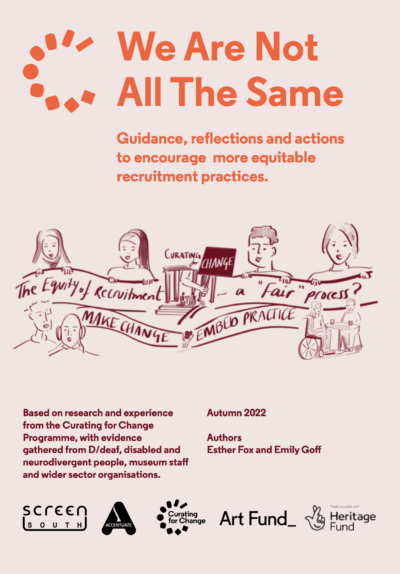We are pleased to publish one of our first outputs from the Curating for Change programme: ‘We Are Not All The Same: Guidance, reflections and actions to encourage more equitable recruitment practices.
As report co-author Esther Fox argues, one of the reasons that current HR policy is failing to diversify the sector is that it is based around the idea of ‘treating everyone the same’. However:

“Treating everyone the same from the outset is often the key concern for HR departments and those who are recruiting to roles,
who may believe this is the fairest most equitable thing to do. Unfortunately, these well-meaning intentions miss the point of equality. That you may have to treat people differently in order for them to compete equally.”
Our guide suggests a more proactive approach, one which from the outset gives people a variety of ways of expressing themselves and demonstrating capabilities and talents – instead of waiting to offer ‘reasonable adjustments’ only when asked.
We cover practical steps including:
- Advertising and pre-application materials
- The application process
- Developing A Person Specification
- Assessing Applications
- The interview process
We also discuss the outcomes, using the example of our recruitment of Fellows and Trainees to the Curating for Change programme. We believe our approach both explains why bringing real equality of opportunity and representation to the sector has been such an intractable problem, and offers simple, effective solutions to begin to solve it.
Ultimately, the underrepresentation of D/ deaf, disabled and neurodivergent people in our museums isn’t just a problem for disabled people, but for the museum and heritage sector as a whole. This hinders it from telling authentic disability stories with insights from the inside. It also makes it more difficult for museums – even if committed to access – to properly understand practical barriers for its visitors. This is why we need to tackle the recruitment problem, to enable a more diverse work force, essential for museums to remain relevant for themselves and their communities.






